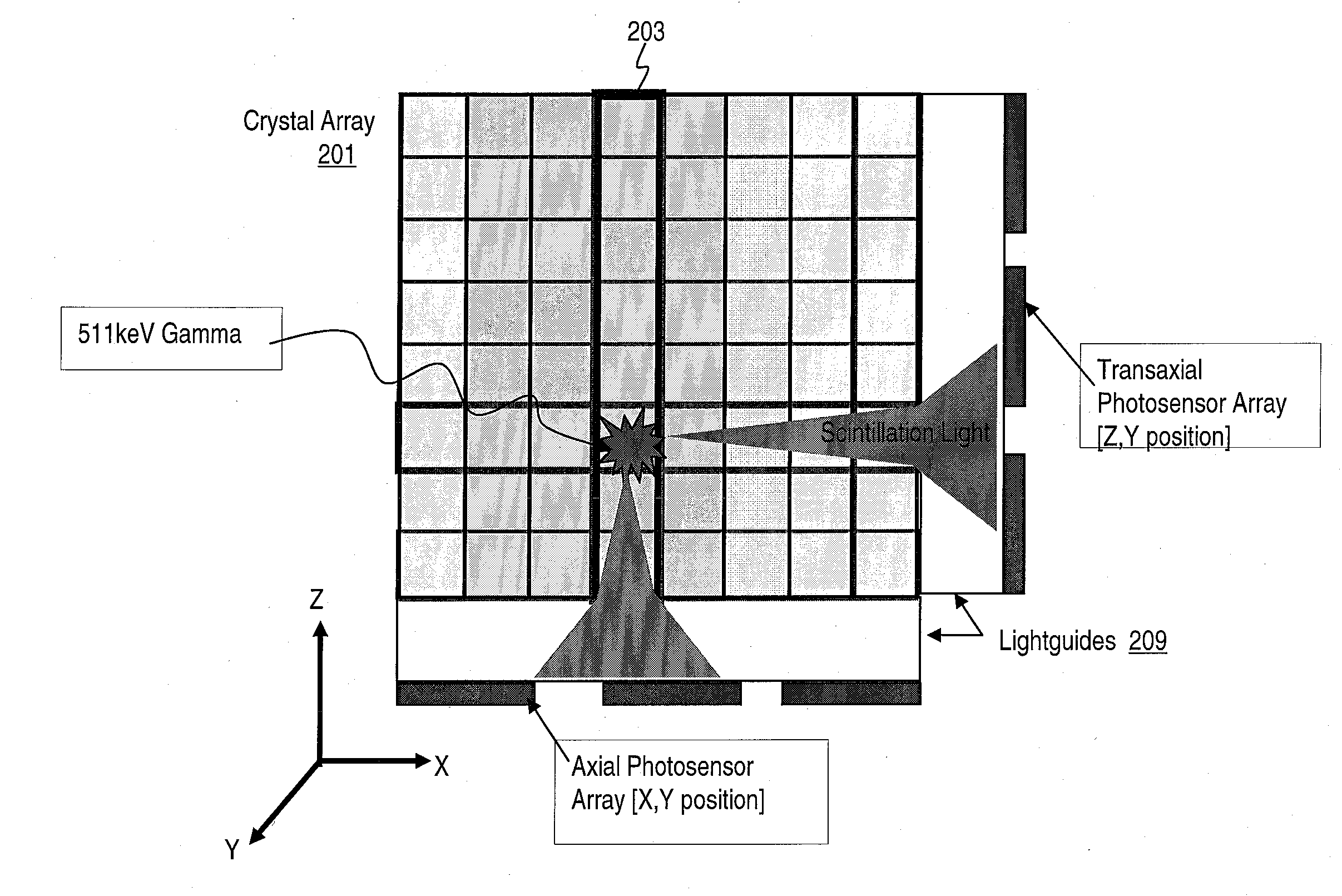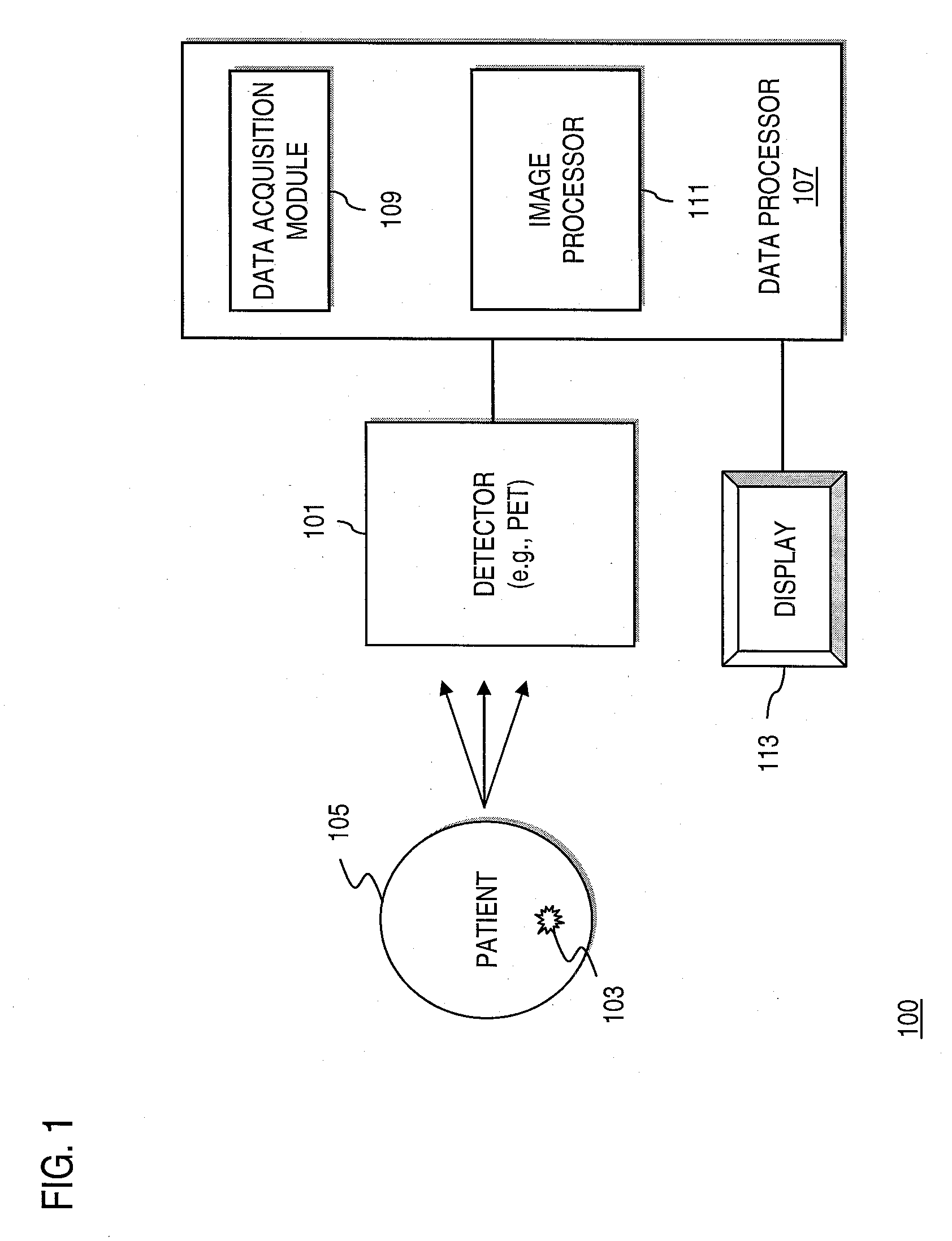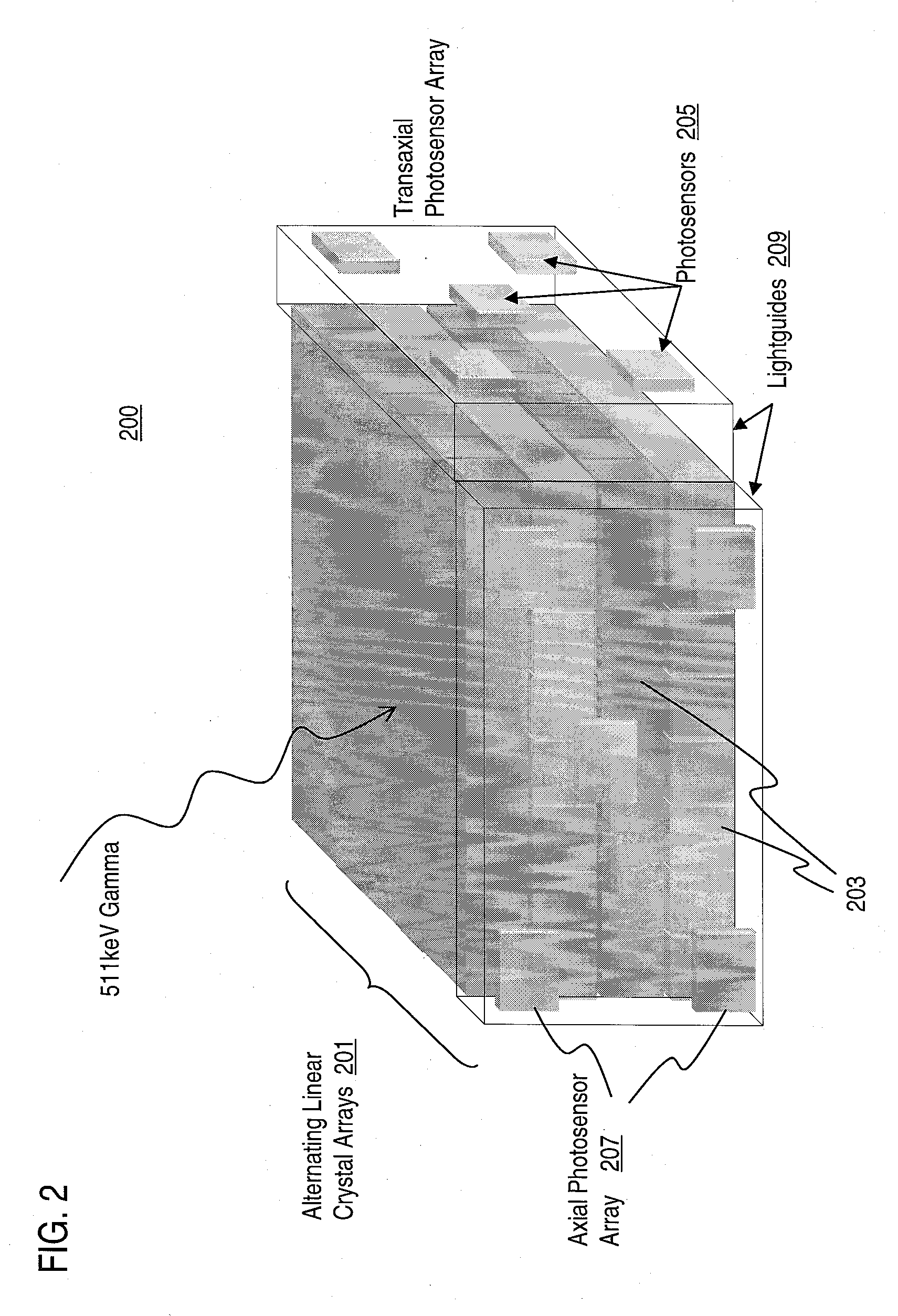Method and Apparatus for Providing Depth-of-Interaction Detection Using Positron Emission Tomography (PET)
a technology of positron emission tomography and depth-of-interaction detection, which is applied in the field of nuclear medicine imaging, can solve the problems of reducing active area, negatively affecting imaging, and resolution, and achieves the effect of increasing resolution and minimizing the edge
- Summary
- Abstract
- Description
- Claims
- Application Information
AI Technical Summary
Benefits of technology
Problems solved by technology
Method used
Image
Examples
Embodiment Construction
[0015]A method and apparatus for providing depth-of-interaction detection using position emission tomography (PET) are described. In the following description, for the purposes of explanation, numerous specific details are set forth in order to provide a thorough understanding of the embodiments of the invention. It is apparent, however, to one skilled in the art that the embodiments of the invention may be practiced without these specific details or with an equivalent arrangement. In other instances, well-known structures and devices are shown in block diagram form in order to avoid unnecessarily obscuring the embodiments of the invention.
[0016]FIG. 1 is a diagram of a detection system utilizing a PET scintillation block for generating depth-of-interaction information, according to various embodiments. As shown, a detection system 100 includes a detector 101 to observe events stemming from a radiation source 103 emitting radiation (e.g., gamma rays) from a subject (patient) 105. Th...
PUM
 Login to View More
Login to View More Abstract
Description
Claims
Application Information
 Login to View More
Login to View More - R&D
- Intellectual Property
- Life Sciences
- Materials
- Tech Scout
- Unparalleled Data Quality
- Higher Quality Content
- 60% Fewer Hallucinations
Browse by: Latest US Patents, China's latest patents, Technical Efficacy Thesaurus, Application Domain, Technology Topic, Popular Technical Reports.
© 2025 PatSnap. All rights reserved.Legal|Privacy policy|Modern Slavery Act Transparency Statement|Sitemap|About US| Contact US: help@patsnap.com



